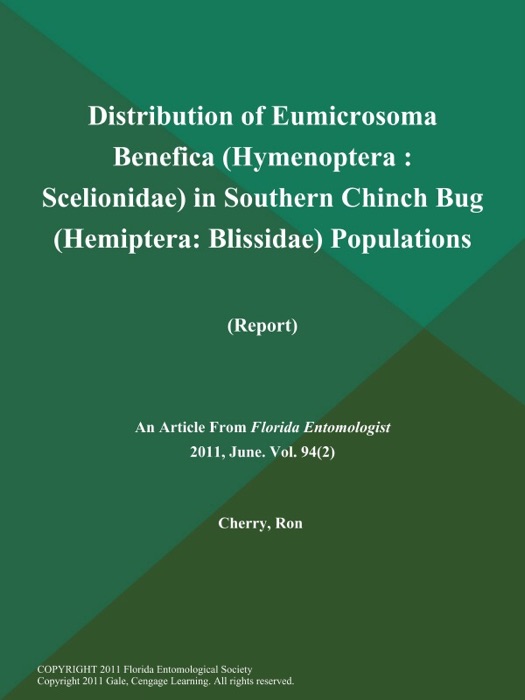[DOWNLOAD] "Distribution of Eumicrosoma Benefica (Hymenoptera: Scelionidae) in Southern Chinch Bug (Hemiptera: Blissidae) Populations (Report)" by Florida Entomologist # Book PDF Kindle ePub Free

eBook details
- Title: Distribution of Eumicrosoma Benefica (Hymenoptera: Scelionidae) in Southern Chinch Bug (Hemiptera: Blissidae) Populations (Report)
- Author : Florida Entomologist
- Release Date : January 01, 2011
- Genre: Life Sciences,Books,Science & Nature,
- Pages : * pages
- Size : 73 KB
Description
St. Augustinegrass, Stenotaphrum secundatum (Walter) Kuntze, is a widely used turfgrass in tropical and subtropical climatic regions (Sauer 1972). It is a commonly grown residential turfgrass species in the southern United States, covering 400,000 ha and accounting for 85% of the sod industry in Florida with an estimated value of $262 million (Haydu et al. 2005). The southern chinch bug, Blissus insularis Barber (Hemiptera: Blissidae), is the most serious insect pest of St. Augustinegrass (Crocker 1993). Management of this insect has been challenged by its development of resistance to several key insecticides (Reinert & Portier 1983; Cherry & Nagata 2005, 2007) and overcoming host plant resistance (Busey & Center 1987; Rangasamy et al. 2006). The egg parasite Eumicrosoma benefica Gahan is the only known parasite of southern chinch bugs in Florida. Reinert (1972) first noted the parasite on southern chinch bugs in Florida and noted various aspects of its biology. In a later study of the natural enemy complex of Florida chinch bugs, Reinert (1978) again noted that E. benefica was the only parasite found. These previous studies provided information on the biology of the parasite, but did not provide a large scale survey of the overall distribution or parasitism rates of the parasite in chinch bug populations in Florida. McColloch & Yuasa (1915) reported the E. benefica was an important factor in the control of the chinch bug B. leucopterus (Say) in Kansas. More recently, Wright & Danielson (1992) reported that the wasp parasitized large numbers of eggs of B. leucopterus in Nebraska. Because of the potential importance of E. benefica, the objective of this study was to better understand the impact of the parasite on southern chinch bug populations in Florida.